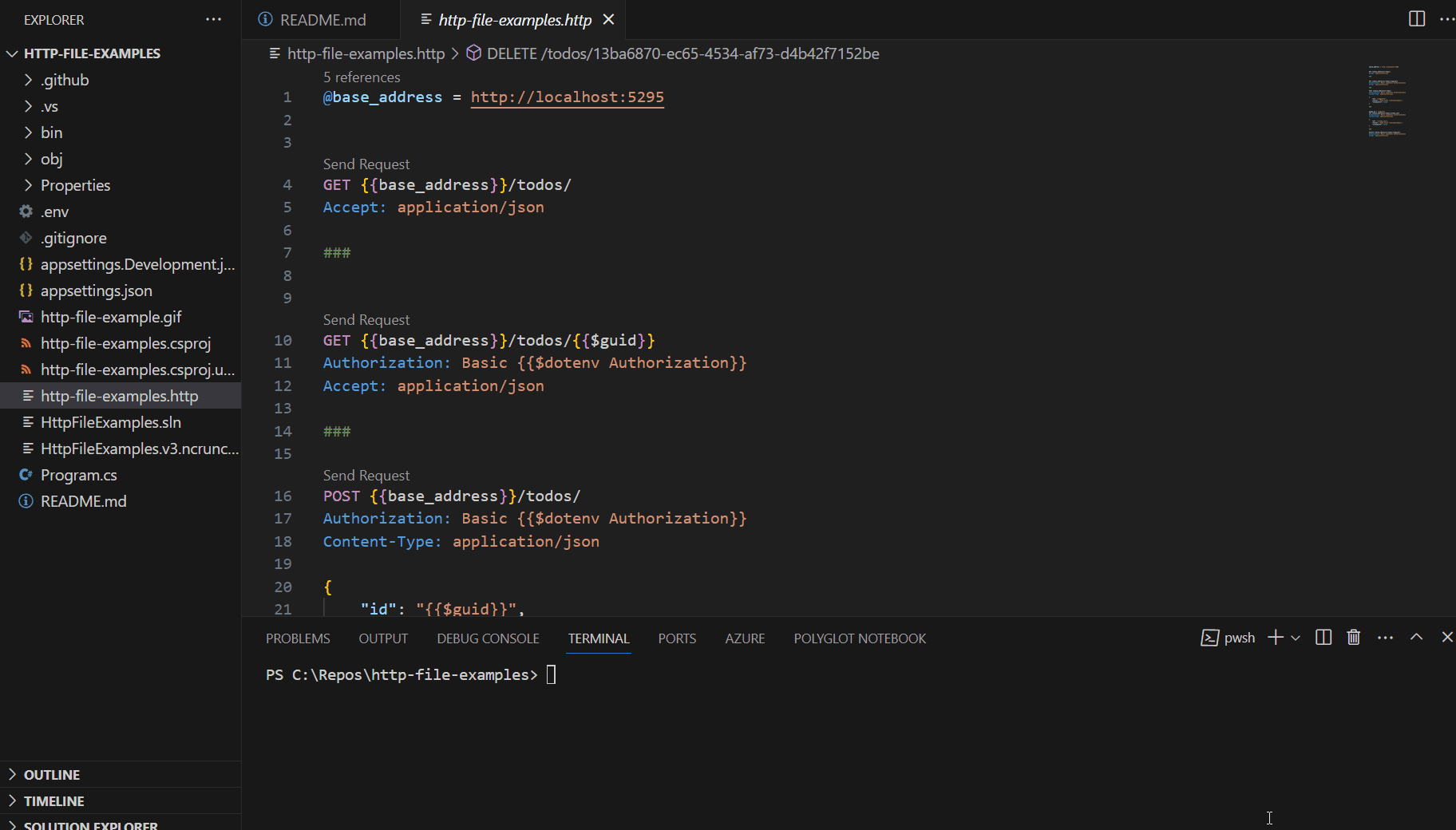Matthew Regis
Introduction
If you've used the dotnet 8 templates for creating an API you might have noticed a new file type, a .http file. This blog post explores this new file and how we can use it.
What is it?
.http files allow you to send HTTP requests with support directly from within visual studio, vscode, rider among others. If you've used Postman and similar applications this will be very familiar.
Why use it?
After having mentioned Postman, you might be thinking why use it when I can just use Postman or similar applications. Here are a few pros I could think of:
- Multi IDE support - It's not just supported for Visual Studio, but also vscode & Jetbrains Rider to name a few.
- Non vendor lock-in - As mentioned in the point above, your no longer tied to using specific applications, this may come at the right time since Postman started requiring account creation to take advantage of most of it's advanced features.
- Code documentation - It can serve as documentation from within your code repository.
- Manual testing - It can also serve as testing tool for your APIs without having to open another application.
What does it look like?
Here is an example I created for demonstrating GET, POST, PUT & DELETE requests taken from this example github repo that I created on GitHub.
@base_address = http://localhost:5295
GET {{base_address}}/todos/
Accept: application/json
###
GET {{base_address}}/todos/{{$guid}}
Authorization: Basic {{$dotenv Authorization}}
Accept: application/json
###
POST {{base_address}}/todos/
Authorization: Basic {{$dotenv Authorization}}
Content-Type: application/json
{
"id": "{{$guid}}",
"title": "Todo Title ({{$timestamp}})",
"isComplete": false
}
###
@todo_id = {{$guid}}
PUT {{base_address}}/todos/{{todo_id}}
Authorization: Basic {{$dotenv Authorization}}
Content-Type: application/json
{
"id": "{{todo_id}}",
"title": "Todo Title ({{$timestamp}})",
"isComplete": false
}
###
DELETE {{base_address}}/todos/{{$guid}}
Authorization: Basic {{$dotenv Authorization}}
Accept: application/json
This HTTP file performs the following actions:
- GET all todos (Unsecured): Retrieves a list of todos without authentication.
- GET a specific todo by ID (Secured): Retrieves a specific todo by ID with basic authentication.
- POST a new todo (Secured): Creates a new todo with basic authentication.
- PUT (update) an existing todo (Secured): Updates an existing todo with basic authentication.
- DELETE a todo by ID (Secured): Deletes a todo by ID with basic authentication.
Code Example
If you want to get started straight away you can get the source code here or can git clone
git clone https://github.com/reggieray/http-file-examples.git
Understanding the API
In order to demonstrate features of .http files, I created a mock minimal API with a RESTful looking endpoint. I added BasicAuthentication to the minimal API so the example could demonstrate setting auth headers. Basic authentication is implemented with a hardcoded username (admin) and password (admin). The API requires this authentication for endpoints marked with the [Authorize] attribute.
/todos(GET): Retrieves a list of Todo items./todos/{id}(GET): Retrieves a specific Todo item by ID./todos(POST): Creates a new Todo item./todos/{id}(PUT): Updates an existing Todo item./todos/{id}(DELETE): Deletes a Todo item by ID.
Running HTTP files
Below I'll demonstrate two ways of running the .http files.
It's worth mentioning that I added a .env file which can be used to get variables for the .http file. In the Microsoft documentation it mentions using $dotEnv, I found this didn't work for me, but using $dotenv did. It's also worth noting I committed this file in for demo purposes. I would advise not to commit any information that has sensitive information.
Below I have included some GIFs of the usage from each respective IDE.
Visual Studio
For Visual Studio you'll need Visual Studio 2022 version 17.8 or later with the ASP.NET and web development workload installed.
VSCode
For VSCode you'll need the REST Client extension.

